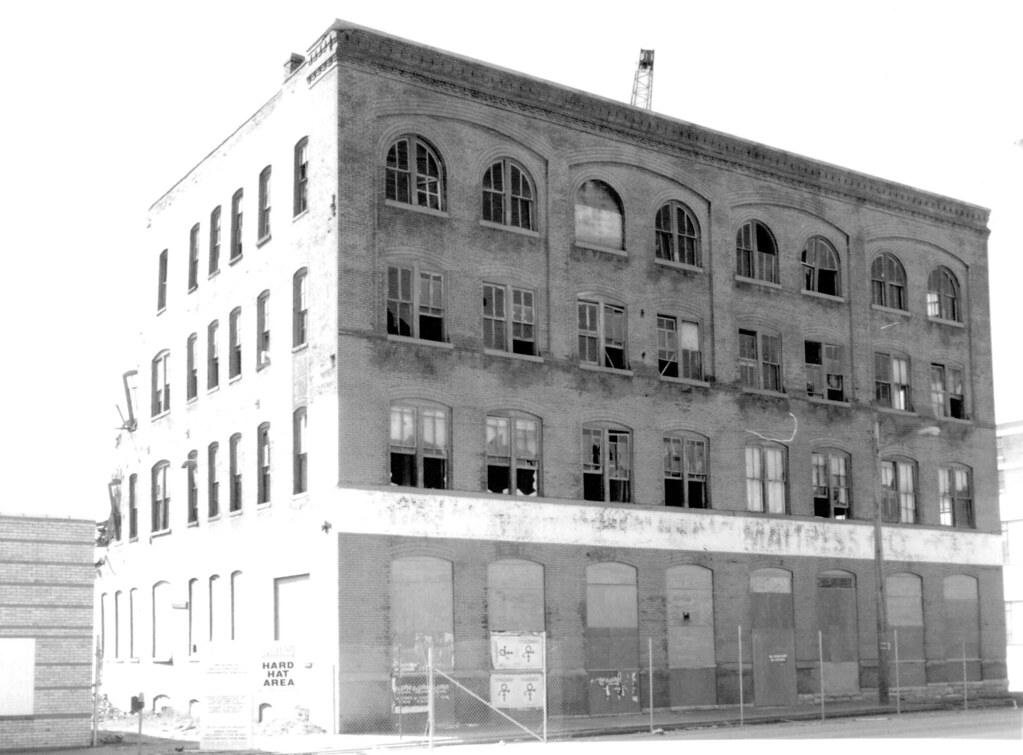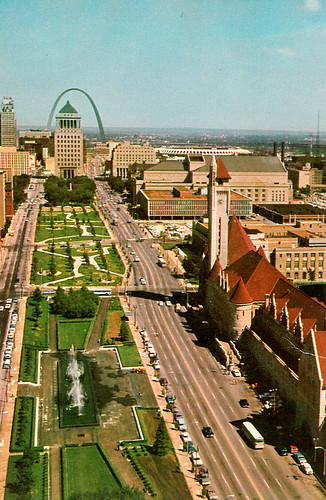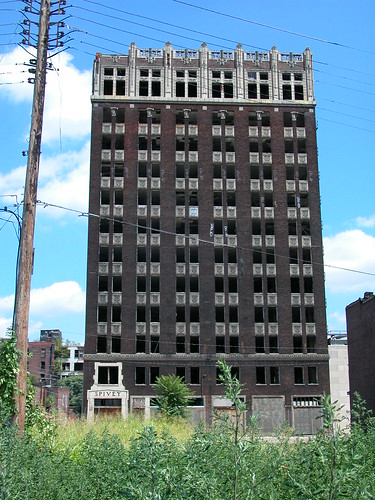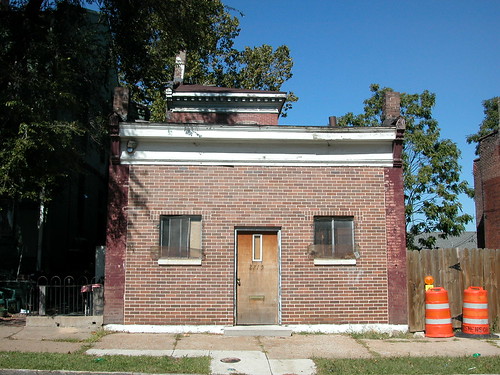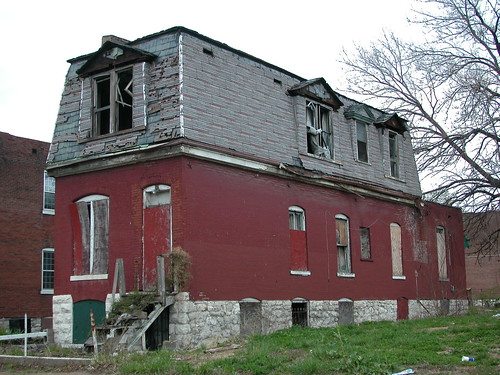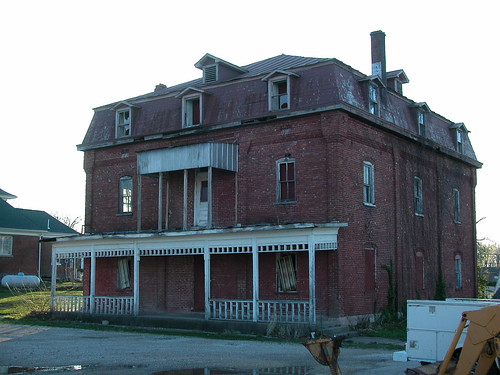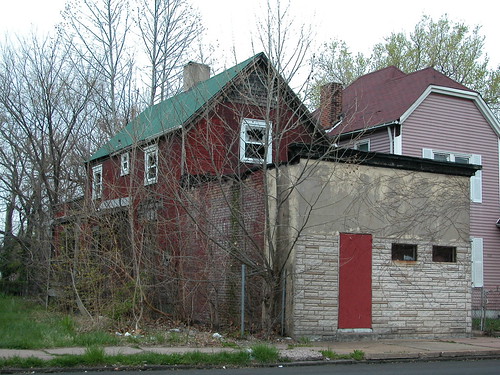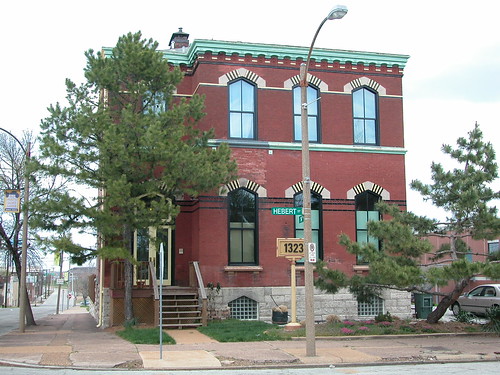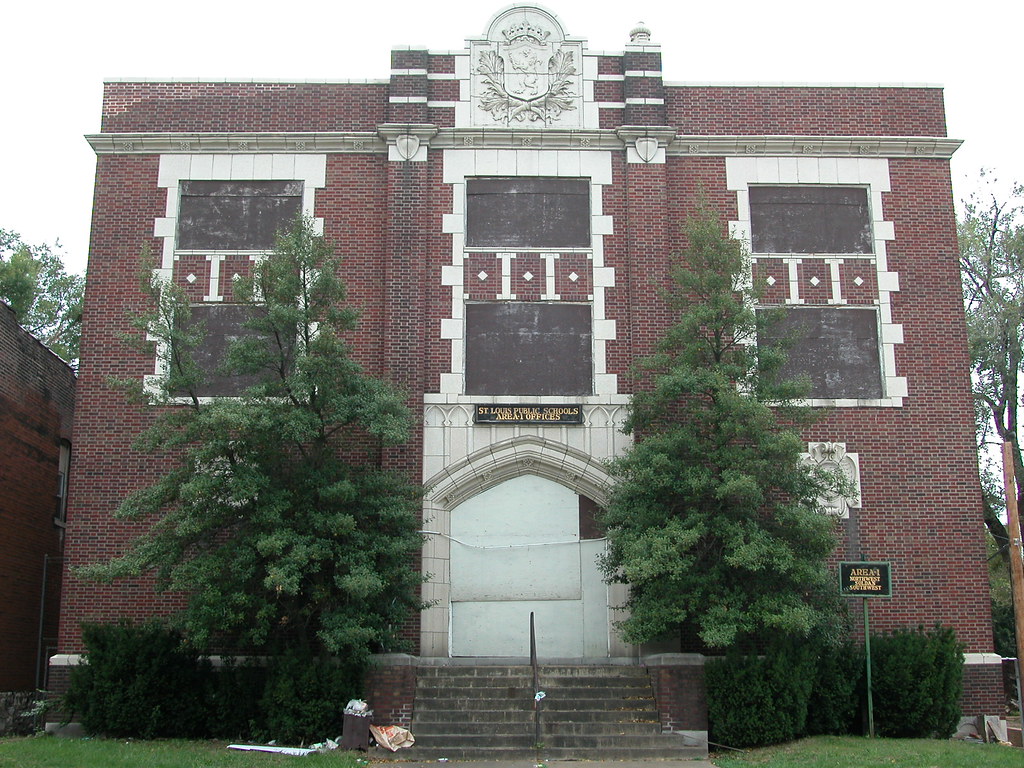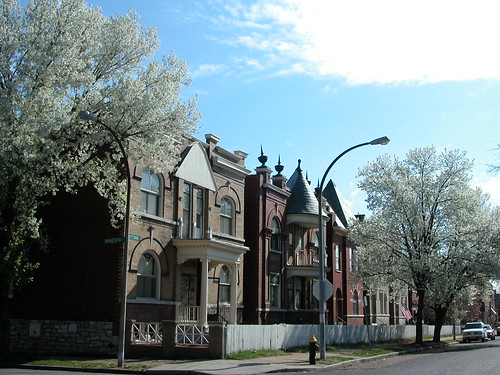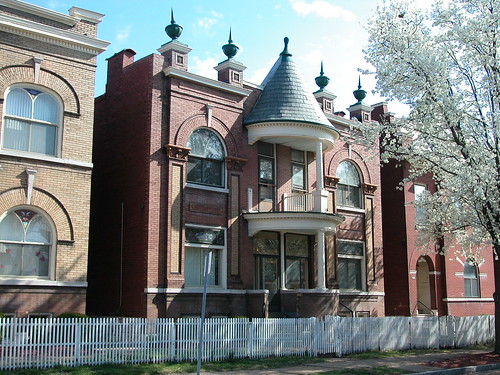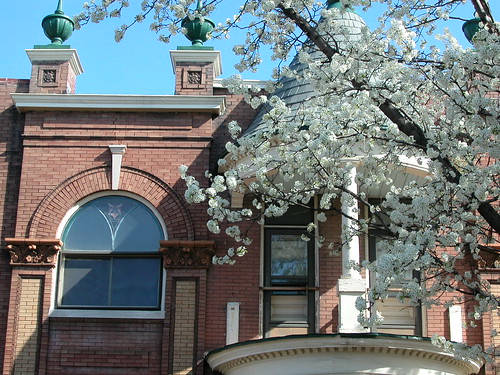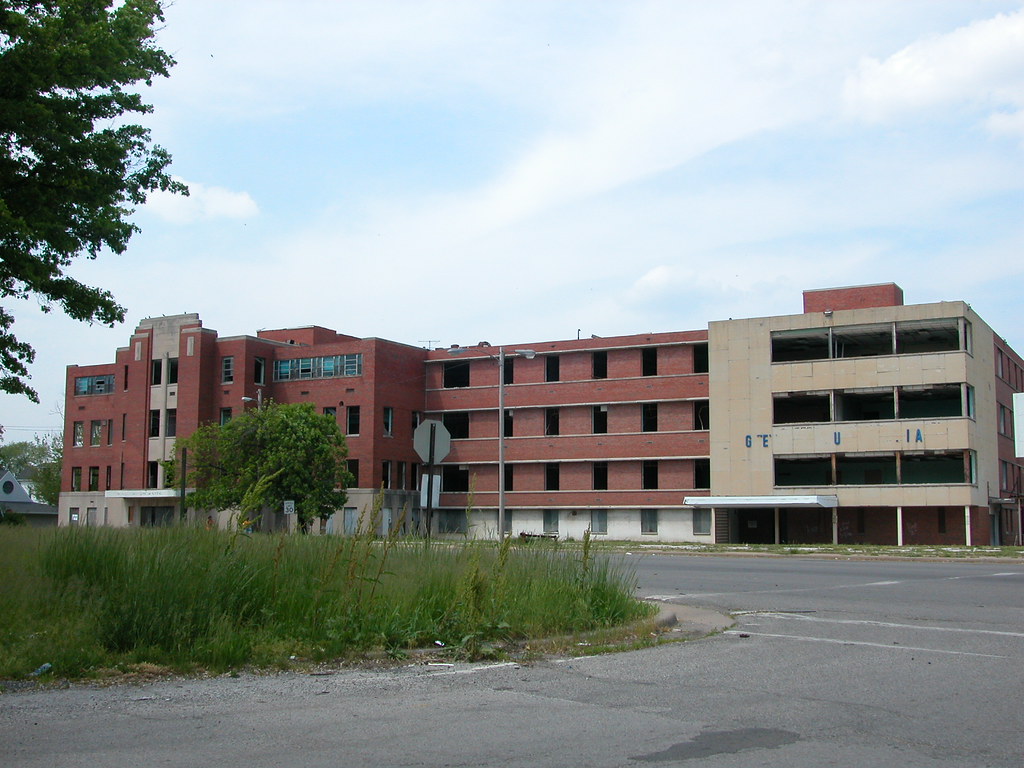
Last week, cash-rich St. Clair County hired a demolition contractor to take down Gateway Community Hospital on Martin Luther King Drive for the beleaguered city of East St. Louis. This is a sad moment for East St. Louis, although I confess that it's impossible to count such moments. One year ago, Kenneth Hall Regional Hospital shut down all but its emergency room and some services. Now, the building that houses the city's second hospital, which closed in 1989, will come tumbling down.
Such are the vagaries of population loss, I suppose, although that does nothing to diminish the symbolic losses or apologize for the public health problems the city faces without a full service hospital. Once upon a time, the city's leaders were able to build two hospitals: St. Mary's, which became Kenneth Hall, and Christian Welfare, which became Gateway Community. Christian Welfare Hospital was even able to open its privately-funded modern new facility in 1940, despite the lingering effects of the Great Depression. At the time, the city had not seen a hospital as large or as well-equipped as Gateway Community. The sad fact is that this the high point of medical service in East St. Louis. No larger or more modern facility would come, although Christian Welfare Hospital was later expanded.
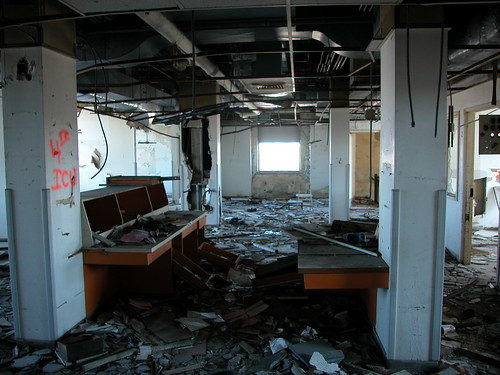
The closure of Gateway Community Hospital just shy of the fiftieth anniversary of its building was not a great shock. The hospital had been ailing for awhile. The demolition is not a big surprise, either, since the buildings have been left unsecured and vandalized since closing. Few windows remain, giving the large complex a foreboding and sad presence that few people would want to live near.
Still, the buildings have weathered 19 years of abandonment relatively well. I have toured the interior several times, including this February, and found little more amiss than falling ceiling tiles, stolen wiring and damaged walls. The structural condition is good. This complex surely could withstand another fifty years of use, at the least.
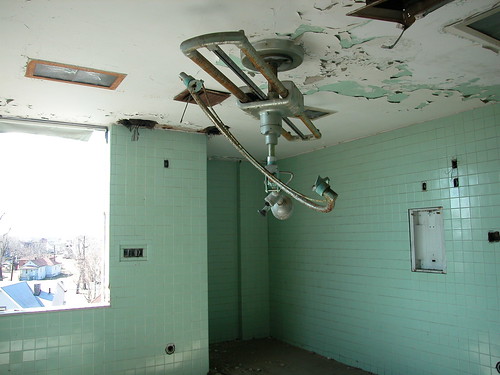
A developer did eye the complex for reuse six years ago, proposing conversion into apartments. That plan withered. No other plan has come since that time, and no one ever thought to nominate the hospital to the National Register of Historic Places. Urban explorers pass through the halls and post their
photographs online. Former staff and patients, though, do have fond memories. My mother's family includes several people born at the hospital.
However, city government is probably relieved that an end is in site for one of the city's biggest abandoned buildings. History alone is little consolation to those charged with keeping a city livable. There must be something more -- and there might be something good in store for East St. Louis if the city doesn't rush to wreck again.
A
Belleville News Democrat editorial (hat tip to the
UEU 314) on the demolition is harsh in calling for the city to take down its other landmark buildings. Admittedly, many are vacant and derelict. However, the hope that these buildings will be reclaimed is greater than the hope that they will ever be replaced. To take away the hope of economic development from East St. Louis at this stage of its life seems cruel. Lofts in the Spivey Building would get the city a unique project and some attention. Demolition of the Spivey for a new drive-through bank -- not so much.
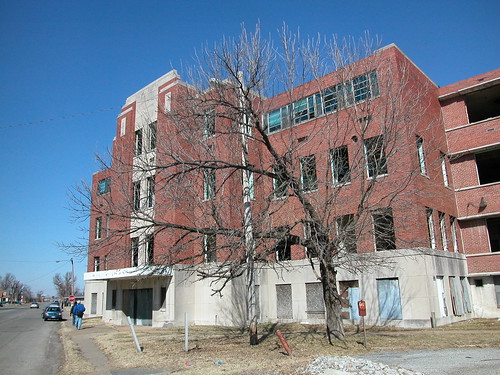
With a historic rehab tax credit proposed for Illinois, the
News-Democrat would do better to put its editorial efforts behind bills in the state legislature that would create a transformational incentive for East St. Louis. The suggestion that there should be no hope that a once-great city can save its beautiful landmarks is absurd. There are numerous developers who have been interested in East St. Louis' unique, but many have walked away because of the lack of a Missouri-style incentive for tackling large buildings. Let's work to provide an incentive before we throw our hands up in the air. The worst days for the city are long past. East St. Louis deserves a future.
